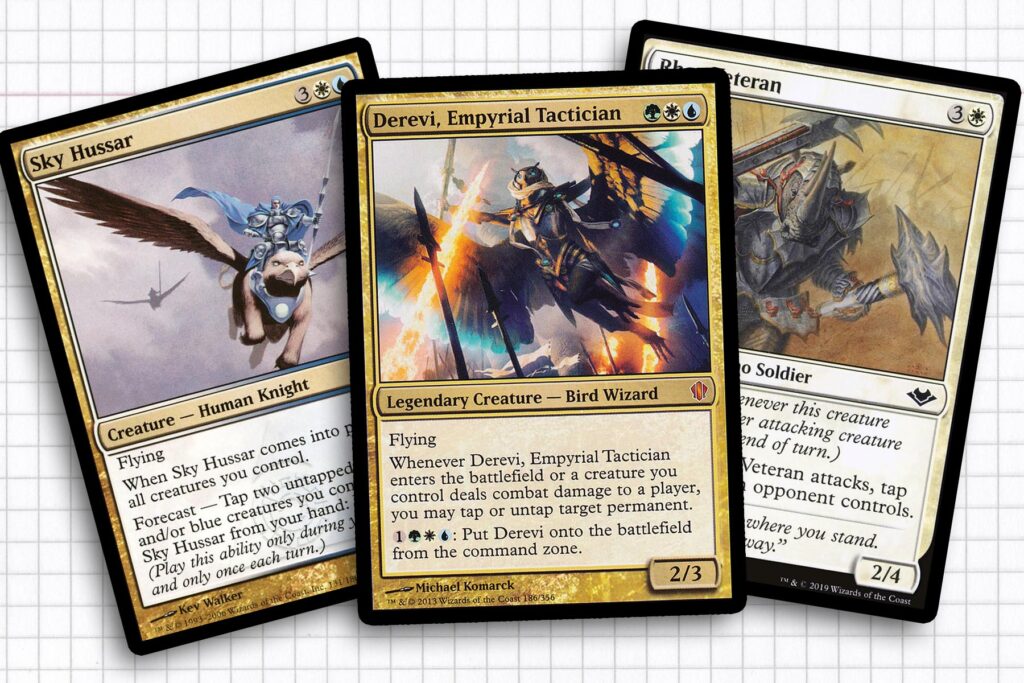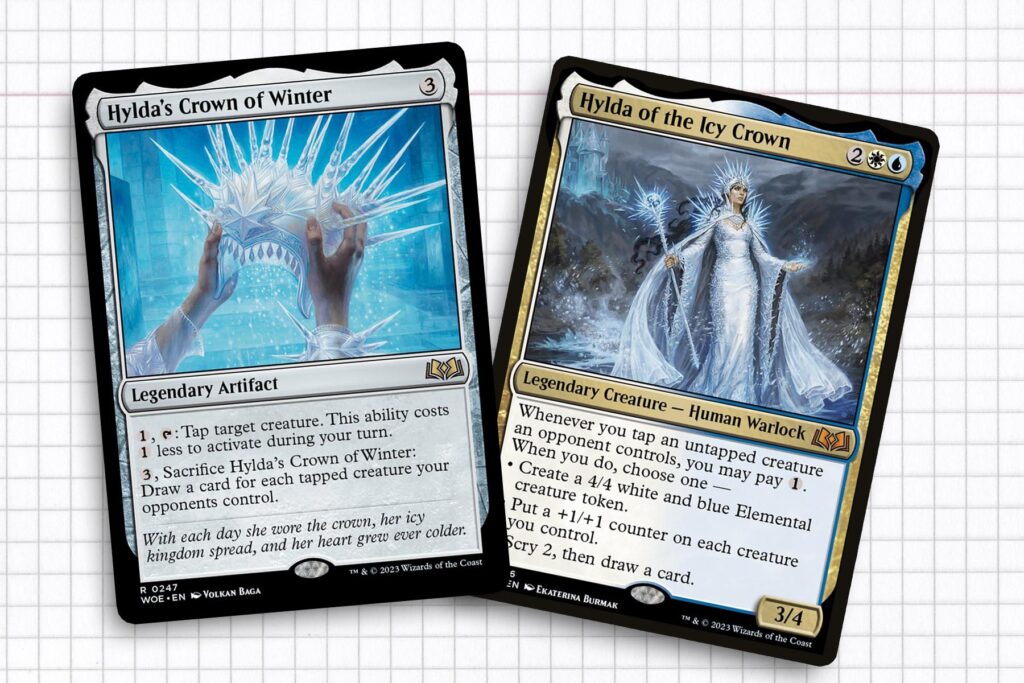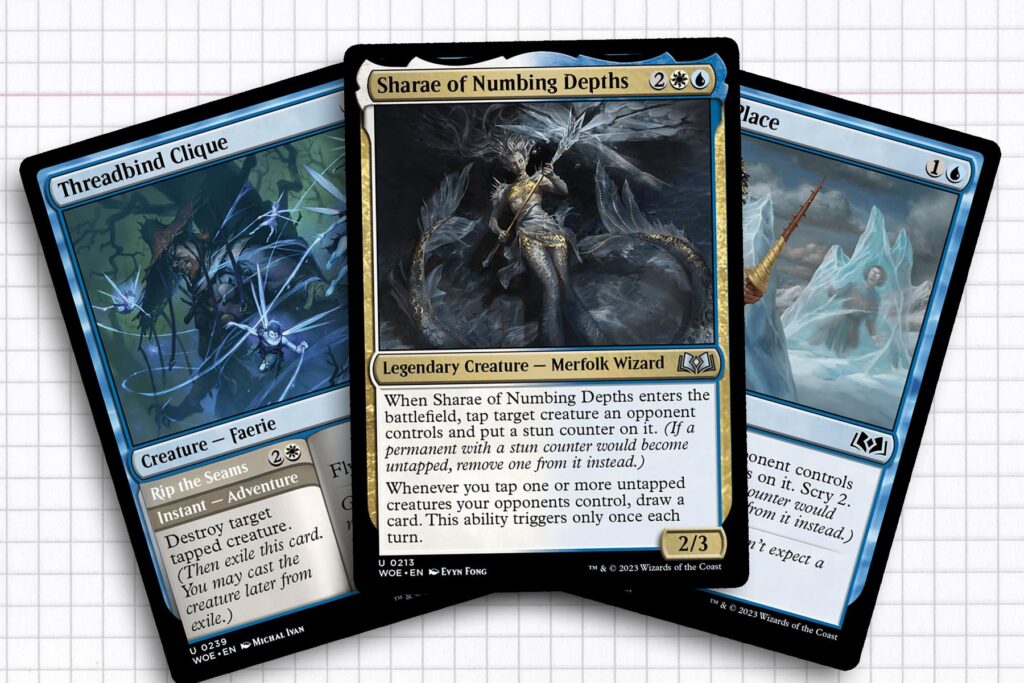It could go without saying that discovering Commander was one of the most rewarding parts of my adult life. The format has been one of the most influential parts of my gaming tenure. As such, the loss of Sheldon Menery, an individual whom I never met but owe a lot to, was unfortunate. I’d like to think the decks like the one I am highlighting today would be in the spirit of what he enjoyed most about the format. Regardless, he will be missed.
When you’ve been playing Magic for a few decades, it is entirely realistic for you to have some long-term projects constantly occupying some amount of one’s deckbox. But this week’s deck is the culmination of a series of decks that date back almost to the beginning of my time interacting with this game. While I fell prey to all the en vogue, trendy themes of the time, from creature-type matters, to artifacts and later the original Ravnica guilds. But at some point, I found myself neck deep in a deck stemming from achieving an unconventional form of creature removal.
My post-college years and multiplayer Magic were strongly linked. I played a lot of Magic just about every weekend and for a stretch of time, as my Thursday game night. At the time, I was facing off against a metagame that included everything from an Ire of Kaminari to casual Affinity, Burn, and Dragons. It was truly a different time. But it was one that ingrained in me the fundamental understanding that Magic was a game that could be competitive or casual and a vehicle for one to express their own personality.
Following the printing of Assassinate and Rathi Trapper in Time Spiral block, I became intrigued by tapped creature destruction and eventually started taking in disparate pieces to form this strange mishmash of a deck I assembled while sifting through Gatherer hundreds of times. Silly as it might sound, this deck inspired by Royal Assassin and Death Stroke made me a better player, teaching me the importance of leaving mana open for a Darkness to blank an attack step, or the need for dual lands or redundant effects like Blind Obedience coupled with Imposing Sovereign. Here is the time capsule of a deck I once ran on a weekly basis:
Creatures (14)
- 3 Benalish Tapper
- 3 Rathi Tapper
- 2 Imposing Sovereign
- 1 Sunblast Angel
- 2 Kor Hookmaster
- 2 Royal Assassin
- 1 Deathbringer Liege
Spells (27)
- 4 Death Stroke
- 3 Demonic Tutor
- 2 Wrath of God
- 2 Damnation
- 2 Glimpse the Sun God
- 2 Angelsong
- 2 Assassinate
- 2 Darkness
- 2 Blinding Beam
- 3 Blind Obedience
- 1 Hissing Miasma
- 2 Gideon Jura
Lands (21)
- 3 Temple of Silence
- 3 Isolated Chapel
- 3 Fetid Heath
- 6 Plains
- 6 Swamp

As Tactics Advance
This archetype is one that has never left the forefront of my mind whenever I think about Magic. To the extent that I will actively pay attention to the innocuous pieces Wizards gives us every year, that just might have a place. And as my focus on Magic moved almost entirely into Commander, it felt inevitable I would port the deck over to Commander. After some hard deliberation, I finally made the decision to convert my Black/White casual deck to a Bant Commander list with Derevi, Empyrial Tactician, ultimately becoming the commander. The discovery of creatures like Gustcloak Cavalier and Heliod’s Emissary could go from forgettable Limited cards to key parts of a deck felt like a crucial revelation.
In the intervening three years, I’ve iterated on the deck over and over in the pursuit of finding perfection again. This would generally result in a card or two making waves a few times a year, but I was never expecting the archetype would see a huge influx of cards coming from a single set, like Wilds of Eldraine. Which is why today we’ll look at where the deck currently resides and then look at the higher-than-normal volume of new cards coming out of Wilds of Eldraine to determine what might be a red flag and what can make the grade.
Commander:
Planeswalkers:
Creatures:
- Bounding Krasis
- Deepfathom Skulker
- Githzerai Monk
- Grazilaxx, Illithid Scholar
- Greater Tanuki
- Gustcloak Cavalier
- Hammers of Moradin
- Haughty Djinn
- Illithid Harvester
- Imposing Sovereign
- Juvenile Mist Dragon
- Kapsho Kitefins
- Kor Hookmaster
- Kros, Defense Contractor
- Lorthos, the Tidemaker
- Loxodon Gatekeeper
- Manglehorn
- Mirri, Weatherlight Duelist
- Niblis of the Urn
- Ojutai, Soul of Winter
- Rhox Veteran
- Sky Hussar
- Spellweaver Duo
- Sunblast Angel
- Thousand Winds
- Trench Behemoth
- Village Bell-Ringer
- Willbreaker
Instants:
- Beast Within
- Cryptic Command
- Feeling of Dread
- Generous Gift
- Stall for Time
- Swift Response
- Thoughtweft Gambit
Sorceries:
- Banishing Slash
- Cultivate
- Impede Momentum
- Piercing Rays
- Rampant Growth
- Regna’s Sanction
- Righteous Fury
- Runic Shot
- Traverse the Ulvenwald
Artifacts:
Enchantment:
- Angelic Benediction
- Authority of the Consuls
- Blind Obedience
- Citadel Siege
- Curse of Inertia
- Far Traveler
- Frozen Aether
- Leyline of Anticipation
- Reconnaissance
- Seal Away
- Thorough Investigation
Lands:
- 3 Forest
- 3 Island
- 5 Plains
- Arcane Lighthouse
- Ash Barrens
- Blossoming Sands
- Bountiful Promenade
- Breeding Pool
- City of Brass
- Command Tower
- Exotic Orchard
- Geier Reach Sanitarium
- Halimar Depths
- Hallowed Fountain
- New Benalia
- Razortide Bridge
- Rejuvenating Springs
- Sea of Clouds
- Spara’s Headquarters
- Tanglepool Bridge
- Temple Garden
- Temple of Enlightenment
- Temple of Mystery
- Temple of Plenty
- Thornglint Bridge
- Thornwood Falls
- Tranquil Cove
- Underdark Rift
Even after a few years, I wouldn’t consider this deck truly optimized by any measure. But after a lot of healthy development, I would certainly say it has reached a point that I am very pleased with. The discovery of Curse of Inertia remains one of my pet cards in the deck, often being underrated while driving the politics of the game pretty overtly. Additionally, the introduction of stun counters has done a lot of good, though Impede Momentum has become a card I am actively looking to replace, not because it’s bad, but because it was the first iteration of the effect and there is plenty of room for power scaling.
The deck had always looked to present legitimate answers to dissuade threats from coming my way, but the addition of Far Traveler, Reconnaissance, Sky Hussar, and Village Bell-Ringer gave the deck a new dimension. Where once Rathi Tapper and Royal Assassin were now actively being a one-two punch, we could simply untap our creatures to help deter combat in our direction, just as we opened up other lanes of attack around the table.

Stepping Out into the Wilds
Now since we’ve established the deck our selection of cards from Wilds of Eldraine are competing with, let’s examine them, starting with two honorable mentions. At first, Galvanic Giant felt like a great middle-of-the-curve card to replace something not pulling its weight, but I realized it only activates from 14 other cards in this list. Similarly, Rimefur Reindeer feels like another card that would do a lot of good for my strategy. But while repeatable, I soon realized it doesn’t have enough triggers in the deck to maximize what it’s trying to do. This feeling of two cards I was pretty attached to seemingly dropping out of contention was a little worrisome for a second. Luckily they were the only two I outright had to remove from consideration.
It’s important to start with the two cards I was sure were auto-included at first: Hylda of the Icy Crown and Hylda’s Crown of Winter. For a good stretch of time, this deck had Quiet Contemplation in it, but it eventually came out because I wasn’t always able to pay that extra tax on spells. This build of Derevi has developed into something that prioritizes keeping extra mana open and being more economical, making it much more realistic to say that Hylda of the Icy Crown will have the triggers and mana needed to churn out value turn after turn.
In the example of Hylda’s Crown of Winter, there was a point in time when having a tap down ability on a permanent was the entire identity of my deck. But once I realized it was far more useful to tie tapping to attack triggers, like Gustcloak Cavalier or Rhox Veteran, the deck took on a more proactive approach. That has allowed me to dictate the results of the game instead of simply skewing the win record towards the ally of my choice. What the deck could certainly use is more card draw, as I am very limited to top decking in many situations. As such, I see the Crown being far more useful as a copy of Borrowing 100,000 Arrows than a legendary Icy Manipulator.

As I mentioned before, I am actively looking for a replacement for Impede Momentum, and Freeze in Place is just the card. It takes a lot for me to say a card is strictly better than another card because context or synergy can drive so much of the conversation around loaded terms like that, but Freeze in Place is Impede Momentum with greater upside almost always. I also really like Plunge into Winter as a quick way to remove a blocker and replace the card. The only hang-up in this case is I don’t have a card to point to for replacement. Feeling of Dread feels like the best candidate, but the appeal of Feeling was you were ensuring another copy of the effect every time, whereas card draw could be anything.
These are not the only substitutions I have been considering, as Snaremaster Sprite is a flying Kor Hookmaster you can opt into. While I have a lot of attachment to the Kor soldier, I don’t know if the extra points of power and toughness would even be enough to deter this change. I’ve also put some thought into Threadbind Clique’s place amongst the archetype I have developed. The card could either replace Piercing Rays or Runic Shot in many respects, and I’m not even sure if I would need the body going on the adventure, but it feels like a lot of upside.
I want to close out my discussion with Sharae of Numbing Depths because I have been conflicted about what I can do with them. In a different world, I could see this being the commander of the deck I initially set out to make in 2020. There are a lot of good things going on with this card. Not only does it utilize stun counters, but also the card advantage gained from creatures being tapped. My one piece of apprehension is I don’t love how the trigger only works once per turn because I think the caveat of triggering off of one or more creatures my opponents control being tapped in a single instance is enough of a restriction that I just wish that this card had been printed a little bit earlier, to dodge Wizards current design principles. Beyond that hesitation, Sharae will likely be the first thing I want to target with Far Traveler whenever possible.
Without being too self-congratulating, I am constantly thankful for the decision to opt out of the black/white color combination that I had tied the tap down strategy to for over a decade in the hopes of exploring the archetype within Commander, ultimately finding this deck. The more experience I put in with it, the more I feel like I can finally make meaningful card evaluations, which is something I can’t easily say about most decks I build and curate. Wilds of Eldraine may drastically change what this deck is capable of, and I can’t wait to get these cards into my hands now that the set has dropped and finally get to explore the next era of this deck in all its glory. Thanks for reading.
Ryan Sainio (he/him) is a Graphic Designer exploring the Commander format and Magic history on a regular basis. Notable decks that value flavorful and fun gameplay over competitively optimized decks include Shattergang Eldrazi, Doran Soul Sisters, and Chatterfang ProsBloom.
MTG Content Creator Awards 2022 nominee: Format Specialty Writing & Excellence in Writing Overall

